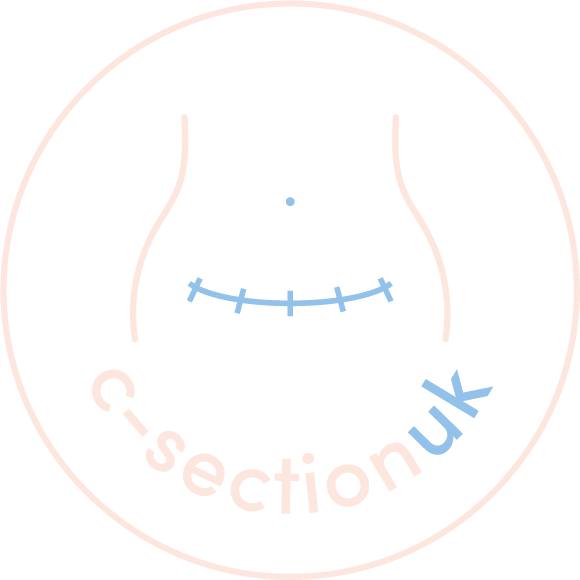The Golden Hour Bonding After Your C-Section
The first hour after your baby is born—known as the golden hour—is an incredibly special window for bonding, skin-to-skin contact and early breastfeeding. Many parents worry they’ll miss out on this moment after a C-Section. But the truth is, with the right support, the golden hour can still be beautiful, meaningful and healing—no matter how your baby enters the world.
What is golden hour?
The golden hour refers to the first 60 minutes after birth, where uninterrupted contact between parent and baby is encouraged. It usually involves:
Skin-to-skin contact on the chest
Initiating breastfeeding or suckling
Calm, quiet bonding with dim lights and minimal interruptions
These early moments help stabilise the baby’s heart rate, temperature and breathing—while also releasing oxytocin in the parent, supporting emotional bonding and milk production.
Why golden hour still matters after a C-Section
If you’ve had a caesarean, you might wonder whether golden hour is even possible. The answer is: yes, absolutely.
Modern hospitals and birth teams now recognise the importance of early bonding after surgical birth. In fact, more and more maternity units are adapting their practices to make this precious time possible—even in the operating theatre.
You don’t lose the chance to bond because you had a C-Section. Your body didn’t fail. This is still your moment—and your baby’s.
Understanding the challenges (and solutions)
C-Section birth does bring a few additional challenges during the golden hour—but most can be worked around with planning and support.
Physical challenges
Sterile field in theatre may limit chest access temporarily
Numbness or limited mobility after anaesthetic
Monitoring equipment post-surgery
Emotional challenges
Feelings of fear, disconnection or exhaustion
Overwhelm from the surgical environment or unexpected events
How birth teams adapt
Some hospitals use clear drapes so you can see your baby’s birth
Midwives and nurses help position the baby across your chest or shoulder
Warming blankets or wraps can allow for safe skin-to-skin even in theatre
Partners play a vital role in supporting both physical and emotional needs
Immediate golden hour strategies (in theatre and recovery room)
You can still experience golden hour in the operating room or recovery area with help from your team.
Skin-to-skin in theatre
Baby can often be placed on your chest or upper shoulder shortly after birth
Midwives or nurses help with positioning and safety
Use of warm wraps or blankets ensures the baby stays cosy and secure
Early breastfeeding
Midwives can assist with side-lying positions, football holds or guided latch. Feeding may begin in recovery or while being stitched, depending on comfort.
Partner’s hands-on support
Your partner can help steady the baby, maintain eye contact, or offer soothing touch. If you’re unable to hold the baby right away, they can do skin-to-skin on your behalf.
Modified golden hour – when immediate contact isn’t possible
Sometimes, circumstances—like anaesthesia effects, NICU admission, or surgical complications—mean immediate golden hour bonding isn’t possible.
That’s okay.
Alternative ways to bond early on
Baby held near your face so you can speak to and smell them
Scent cloths can be swapped between you and baby
Partner skin-to-skin while you recover
Even if hours pass before full contact, it still counts. Oxytocin, bonding and breastfeeding can happen over days and weeks—it’s not limited to just one hour.
The midwife’s role – advocacy and preparation
Midwives play a crucial part in helping you plan for golden hour after a C-Section. They can:
Write your preferences into your birth plan
Liaise with the theatre team to make sure everyone is on board
Help you feel emotionally supported and grounded
Encourage your partner’s involvement and prepare you for variations
Midwives also advocate for you in real-time—protecting space for bonding, even in clinical settings.
Voices from the field
"I didn’t think I’d get to hold my baby in theatre, but my midwife tucked her inside my gown while I was still being stitched up. I cried the whole time—it was magic."
— Hannah, mum of two
"As a midwife, I always ask the surgical team if we can do skin-to-skin in theatre. Most say yes—it’s becoming the norm, not the exception."
— Lucy, NHS midwife
"We couldn’t do skin-to-skin until recovery, but the nurse held my son right next to my face. We locked eyes—that moment stayed with me forever."
— Jamila, first-time mum
Golden hour 2025 – evolving policies and possibilities
Birth practices are changing—and that includes how golden hour is supported after C-Sections.
Clear drapes, side access gowns and warming bassinets are becoming more common
Trauma-informed care and family-centred policies are helping parents feel seen and supported
More hospitals are training teams to prioritise early contact, even in complex situations
In many places, golden hour after C-Section is now the expectation — not the exception.
Every bond is unique and every moment counts. If your golden hour didn’t look like the idealised version, know this: your bond is still real.
Connection can be slow, surprising, or immediate—and it continues to deepen every day. Whether it started in theatre, in recovery, or the next morning, what matters is love, not a stopwatch.
Midwife’s reminder: The golden hour is a moment—but your relationship is a lifetime. Be flexible, stay present, and give yourself grace.
